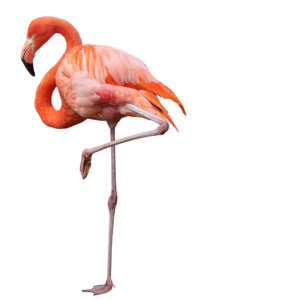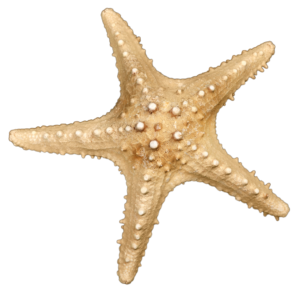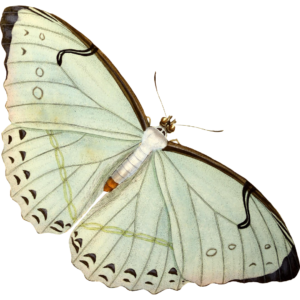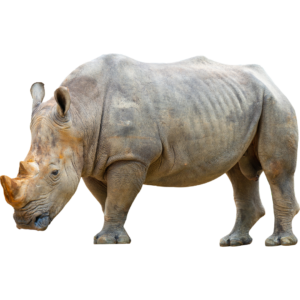Wildya's Glossary:
Understanding Nature & Yourself
Understanding how nature, climate change, and sustainable institutions work can sometimes be a true barrier to actually taking action. But apprehending how our brains, emotions, and basic reactions work isn’t easy either. Yet, education is one of the keys to turning eco-anxiety into action. Understanding the terms and acronyms you read or hear is part of it and essential. This is why we have created this glossary and gathered all the terminology and definitions you could come across in your journey. From sustainability to biodiversity and mental health, here is your ABC guide to start understanding nature and yourself better.


Browse definition by letter
1% for the Planet
1% for the Planet is a global network of thousands of businesses and environmental organizations that work together to support people and the planet by donating at least 1% of annual sales to environmental organizations.
3 C's (Cores, Corridors, Carnivores)
The 3 C’s refer to the three pillars for nature rewilding and recovery, which are reintroducing large carnivores in core zones of wilderness linked to each other by wildlife corridors.
30x30 Scheme
The 30×30 scheme refers to the goal of conserving 30% of lands, oceans, and fresh waters by 2030. It is the third target of the Kunming-Montreal Global Biodiversity Framework (also known as The Biodiversity Plan), adopted by over 190 countries in December 2022.
3 D's (Diversity, Dispersal, Disturbance)
The 3 D’s refer to diversity, dispersal, and disturbances, which are the three dimensions necessary for a rewilding process. This technique can be applied to any environment.
Animal Behaviour
Animal behavior refers to how animals behave, evolve, adapt, and interact with themselves and each other in the natural world.
Amphibians
Amphibians are cold-blooded vertebrates (with backbones). They are small animals that can live both in water and on land when they are adults, like frogs, for example.
Anthropocene
The Anthropocene, also called the Anthropocene epoch, is the current geological period we are living in and refers to the era when human activity started to have a significant impact on the environment.
Aichi Biodiversity Targets
The Aichi biodiversity targets are 20 specific targets set by the UN Convention of Biological Diversity to address and reduce biodiversity loss worldwide. The first plan goals were aimed to be reached by 2020.
Anthropogenic Climate Change
Anthropogenic climate change, also called anthropogenic environmental change, is the impact of human activities on climate change.
Biodiversity
Biodiversity refers to the variety of life that exists on Earth. It includes species diversity (elephant, tiger & co.), genetic diversity (different eye color in humans) and ecosystem diversity (coral reefs, deserts, rainforests & co.).
Biocentrism
Biocentrism refers to the concept of considering that animals’ lives are as important and crucial as human beings.
Biodiversity Loss
Biodiversity loss refers to the decline and extinction of a massive number of forms of life (animals, insects, plants, corals, fungi, etc.) as well as their genetic diversity and ecosystem diversity.
Biodiversity Stripes
Biodiversity stripes are the equivalent of climate warming stripes but for biodiversity. They offer a clear visual representation of biodiversity loss over time.
Birds
Birds are warm-blooded vertebrates (with backbones) with feathers, beaks, wings, and the unique ability to lay eggs. Many of them can fly.
Biophilia
Biophilia is the intrinsic love of humans for nature and all living things.
Biological Abundance
Biological abundance, also know as species abundance, is a measure that showcases the representation of a particular species within an ecosystem.
Biome
A biome is a large community of plants and animals that occupies a distinct region with specific climate conditions and life forms.
Biomass
Biomass is the total mass or weight of all the living organisms in a given area or ecosystem at a certain time.
Carbon
Carbon, symbolized by C, is a chemical element found in all living things and is the basis for organic life. It is also widely used in many forms, such as fuel (coal, oil), diamonds, and graphite.
Carbon Footprint
The carbon footprint refers to the total amount of greenhouse gases released into the atmosphere due to a person’s, organization’s, or product’s actions and activities.
Climate Anger
Climate anger refers to the emotion people feel towards individuals or groups they hold responsible for contributing to climate change and damaging the environment.
Climate Anxiety
Climate anxiety is the distress or worry that people experience when thinking about the current and future impacts of climate change on our planet and lives.
Climate Change
Climate change refers to significant and long-term changes in the Earth’s weather patterns and average temperatures.
Climate Warming Stripes
Climate warming stripes are a graphic representation of the global warming trend year by year. Professor Ed Hawkins created this visual data in 2018.
Climate Depression
Climate depression is a mental health condition (not yet recognized as a mental illness) where a person persistently feels extremely sad and loses interest in enjoyable activities due to the current climate crisis.
Climate Emotions
Climate emotions are a set of various feelings people can experience in response to climate change.
Climate Enthusiasm
Climate enthusiasm is when people feel inspired, motivated, and excited about finding solutions to face the current climate crisis.
Climate Guilt
Climate guilt refers to the emotion of feeling remorse, guilty, and upset around the perception that one’s behaviour negatively affects the climate.
Climate Powerlessness
Climate powerlessness refers to an individual’s feelings that their actions and behaviour changes are inadequate against the magnitude of climate change.
Climate Isolation
Climate isolation depicts an individual’s feelings of disconnect and isolation in their perception or concerns around climate change.
Climate Sorrow
Climate sorrow, likened to climate grief, refers to the emotional response a person experiences due to the heightened threat of climate change. As our planet faces severe environmental challenges, people may feel sad and anxious which can link to feelings of grief and sorrow.
Climate Trauma
Climate trauma refers to the psychological stress, and lasting negative impacts of climate change on an individuals mental health.
Coexistence
Coexistence refers to the harmonious living or existence at the same time or in the same place. It could imply the peaceful cohabitation of different species within the same ecosystem.
Conservation
Conservation encompasses various practices of protecting Earth’s natural resources, biological diversity, and its loss. It includes the effort to preserve species, ecosystems and genetic diversity.
CBD (Convention on Biological Diversity)
CDB, which stands for Convention on Biological Diversity and which is also known as the Rio Convention, is the first global agreement to provide a legal framework for biodiversity conservation.
COP (Climate 29 / Biodiversity 16)
COP stands for the Conference of the Parties, the supreme decision-making body of the Convention. It meets every year and first met in 1995.
Coral
Coral refers to a group of marine organisms that form reefs with other organisms, often found in warm tropical waters. Despite resembling seabed plants, corals are a type of animal that come from within the class of Anthozoa of the phylum Cnidaria and are essential to biodiversity.

DNA
DNA (deoxyribonucleic acid) is a molecule that contains the genetic code that is unique to every person and almost all living organisms.
Deep Ecology
Deep ecology is a movement based on eight fundamental principles. It opposes anthropocentrism and supports the idea that human beings are of equal value to all other parts of nature.
Eco-anger
Eco-anger refers to a form of anger provoked by environmental degradation and societies’ failure to adequately address these issues.
Eco-anxiety
Eco-anxiety, also referred to as climate anxiety, refers to the psychological distress or emotional response caused by the perceived or real effects of climate change.
Eco-anxiety Scale
Hoggs eco-anxiety scale measures an individual’s scale of eco-anxiety by assessing and understanding the psychological effects of climate change. Its findings support eco-anxiety as a quantifiable psychological experience that is reliably measured and differentiated from mental health outcomes using a 13-item scale.
Ecocentrism
Ecocentrism refers to the intrinsic value of nature.
Ecocide
Ecocide represents the extensive destruction of nature, fueling the current climate and ecological emergencies. It typically occurs on a significant industrial scale or when extensive regions are impacted.
Eco-depression
Eco-depression encompasses feelings of depression, anxiety, panic, grief, and sadness triggered by the loss of natural environments or wildlife populations.
Eco-emotions
Eco-emotions describe the feelings an individual may possess as a reaction to environmental change and the climate crisis. This can include but not limited to anxiety, depression, anger, grief, and guilt.
Eco-grief (Environmental Grief)
Eco-grief refers to the feeling of sorrow and loss resulting from witnessing environmental degradation caused by climate change.
Eco-guilt
Eco-guilt highlights the feelings an individuals feels for their lack of climate action.
Eco-justice
Eco-justice advocates for equitable protection for cultural, racial, ethnic, and socioeconomic groups from environmental and health risks. It ensures equal participation in the decision-making processes concerning environmental policies and development.
Ecology
Ecology is the examination of organisms and their interactions with the surrounding environment.
Eco-shame
Eco-shame includes highlighting another individual’s environmental inactivity, or lack of personal eco-awareness meant in good faith to drive behavioural change.
Ecosystem
An ecosystem is a region where living organisms, along with weather and terrain, collaborate to create a living environment, encompassing both biotic (living) and abiotic (non-living) components.
Eco-therapy
Eco-therapy encompasses therapeutic treatment facilitated by trained professionals, focusing on organised activities to foster a deeper connection with the natural world.
Ecosystem Services
Ecosystem services refer to the direct and indirect benefits ecosystems provide for human well-being, significantly influencing our survival and quality of life. There are four types of ecosystem services: provisioning, regulating, cultural and supporting services.
Ecosystem Recovery
Ecosystem restoration involves aiding the recovery of degraded or destroyed ecosystems while preserving intact ones, leading to healthier ecosystems with enhanced biodiversity.
Eco-tourism
Ecotourism is currently described as responsible travel of natural landscapes that preserves the environment, supports local communities, and includes educational experiences.
Environmental Cataclysm
Environmental cataclysm refers to a significant or turbulent event characterised by widespread disruption and destruction.
Evolution
Evolution is the process by which organisms undergo genetic changes over time, leading to the emergence of new traits and species.
Extinction
Extinction refers to the disappearance of a species and is pivotal in life’s evolution as it creates openings for the emergence of new species.
Extinction Rate
Extinction rate represents the number of species lost over time, assessable by comparing current and past species counts. Background extinction results from natural factors and present-day extinction accelerated by human activities that pose a significant threat to biodiversity.
Fauna
Fauna refers to the collective animal life found in a specific region or habitat, including mammals, birds, reptiles, amphibians, and insects.
Flora
Flora refers to the collective plant life found in a specific region or habitat. Examples are trees, shrubs, ferns or flowers.
Fight-Flight-Freeze
The fight-flight-freeze response is the body’s innate reaction to danger. It is characterised by hormonal and physiological changes that enable quick action for self-protection.
Fungi
Fungi are a diverse group of usually multicellular organisms that play essential roles in ecosystems as heterotrophs, contributing to nutrient cycling.
Foodchain
The food chain illustrates a linear transfer of nutrients between organisms through consumption. It starts with producers, concluding with decomposers and highlights the interdependence among organisms for survival.
Forest Bathing
Emerging in Japan in the 1980s, forest bathing, also know as shinrin-yoku, is a practice that serves as both a fitness trend and a mindfulness exercise. It aims to combat tech-related stress while fostering a deeper connection with nature.
Global Diversity Framework
The Kunming-Montreal Global Biodiversity Framework (GBF) is a crucial international agreement designed to tackle the decrease in biodiversity and advocate for the sustainable management of ecosystems.
Green Shaming
Green shaming occurs when individuals shame others for not being as environmentally conscious as they perceive themselves to be, often implying a hierarchy of environmental responsibility for individuals or businesses.
Greenwashing
Greenwashing involves misleading consumers by falsely conveying the environmental friendliness of a company’s products or practices.
Greenhushing
Greenhushing refers to a company refraining from communicating their sustainability efforts. This could be due to concern about public criticism, reluctance to highlight their initiatives, or avoidance of discussing their climate objectives.
Greenhouse Gases
Greenhouse gases, such as carbon dioxide, methane, and nitrous oxide, retain heat in the Earth’s atmosphere, altering its temperature by affecting the exchange of energy.
Habit
A habit is a pattern of behavior that occurs regularly and often unconsciously due to repetition.
Habitat
A habitat is the dwelling place of an organism, fulfilling all necessary environmental conditions for its survival, including food gathering, mate selection, and successful reproduction.
Human-Wildlife Conflict
Human-wildlife conflict (HWC) arises when animals present a persistent and direct danger to human livelihood or safety, often resulting in the persecution of the involved species.
Ikigai
Ikigai, a Japanese concept, denotes a state of well-being derived from engaging in activities one enjoys and finds fulfilling.
Indigenous
The term indigenous refers to an individual or item originating from a specific area or ecosystem. It is typically used in reference to plants or peoples where they naturally grow, live, and produce.
Inner Development Goals
Inner Development Goals (IDGs) is a non-profit organisation dedicated to inner growth. They conduct research and communicate scientifically-backed attributes essential for leading purposeful, sustainable, and productive lives.
Invertebrate
An invertebrate is any animal that lacks a vertebral column, also known as a backbone. This can include species such as spiders, snails or jellyfish.
Invasive Species
An invasive species is a non-native organism introduced to a different environment, capable of causing economic and environmental damage to the region.
IBPES
The Intergovernmental Science-Policy Platform on Biodiversity and Ecosystem Services (IPBES) is an intergovernmental body bridging science and policy to conserve biodiversity and ecosystem services for sustainable human well-being and development.
IUCN
The International Union for Conservation of Nature (IUCN) is a collective union comprising government and civil society organisations dedicated to promoting sustainable development. They foster a fair global community that appreciates and preserves nature.
Kaizen
Kaizen, originating from Japan, embodies the concept of continuous improvement through small, incremental changes that create an impact over time.
Keystone Species
In any ecosystem, a keystone species plays a crucial role in maintaining the system’s structure and function. Its absence could significantly alter the ecosystem’s appearance and resilience to environmental changes.
Key Biodiversity Areas
Key Biodiversity Areas (KBAs) are globally significant locations for species and their habitats. The KBA Programme aids in identifying, mapping, monitoring, and conserving these areas to protect nature’s most vital sites worldwide.
Landscapes of Fear
First introduced in 2001, landscape of fear has become popular in explaining how animals perceive and react to the risk of predators in different areas.
Life Coaching
Life coaching is a personalised process aiding individuals to define their goals, recognising challenges, and devising tailored approaches to attain their desired outcomes.
Living Plant Index
The Living Planet Index (LPI) gauges the global biological diversity status by tracking population trends of vertebrate species across terrestrial, freshwater, and marine environments.
Livestock
Livestock refers to domesticated animals bred on farms to supply labor and a variety of products for consumption or pleasure.
Mammals
Mammals are animals with backbones that nurse their offspring with milk, possess fur or hair, a movable lower jaw, and a muscular partition called a diaphragm.
Marine Protected Areas
Marine protected areas are designated ocean zones aimed at conserving and managing marine ecosystems and species by limiting human activities such as fishing or shipping.
Mass Extinction
Megafauna
Megafauna refers to a very large animal, typically weighing over 45kg.
Mental Health
Mental health is when someone feels good about themselves, can handle everyday challenges, work effectively, and contribute positively to their community.
Mental Fitness
Mental fitness refers to attaining and maintaining a positive state of well-being, coupled with the mindfulness of regarding our thoughts, actions, and emotions.
Mental Illness
Mental illness is a health condition that can involve changes in emotions, thinking or behaviour.
Mental Masturbation
Mental masturbation is a phrase employed to characterize excessive contemplation or fixation on a dilemma, often serving as a means of evading decisive action or choices.
Mycelium
Mycelium is the root system of a mushroom. Its vegetative body comprises a compact network of hyphae, which are thin, thread-like filaments.
Nature
Nature encompasses all living and non-living things existing in the physical world (mountains, ocean etc.). It includes the physical form and interactions of plants, animals and natural phenomena.
Nature-based Learning
Nature-based learning is a 21st-century reform that takes education from the four walls of a traditional classroom and into the great outdoors.
Nature Deficit Disorder
Nature deficit disorder is a term describing the negative consequences of reduced exposure to nature, particularly in children, leading to issues such as decreased physical activity, attention problems, and increased stress levels.
Nature Positive
Nature positive refers to initiatives that aim to promote the restoration and conservation of ecosystems, biodiversity, and natural resources to ensure their health.
Neuron
Neurons are specialised cells in the nervous system that transmit information through electrical and chemical signals. It enables communication from the brain to the rest of the body.
Neurodivergent
Neurodivergent describes individuals whose neurological makeup and cognitive processes differ from what is considered typical or average. It encompasses conditions such as autism, ADHD and dyslexia.
Neuroscience
Neuroscience is the scientific study of the nervous system, including the brain, spinal cord, and peripheral nerves. It aids the understanding of how they function and influence behavior, cognition, and emotions.
Neurotransmitter
Neurotransmitters are chemical messengers released by neurons to transmit signals across synapses to target cells. This process helps your brain cells communicate and coordinate different functions in your body, like thinking, moving, and feeling.
Nitrogen Cycle
The nitrogen cycle is the process by which nitrogen is converted and circulated between different forms in the atmosphere, soil, and living organisms. This includes nitrogen fixation, nitrification, assimilation, ammonification, and denitrification.
Organism
An organism refers to a living entity, such as a plant, animal, fungus, bacterium, or protist that is capable of carrying out life processes like growth, reproduction, and metabolism.
Permafrost
Permafrost is a thick layer of soil, rock, or sediment that remains frozen for two or more consecutive years, found in polar regions and high mountain areas.
Planetary Boundaries
Planetary boundaries define the safe operating space for humanity within Earth’s ecological systems, delineating the environmental limits beyond which abrupt and irreversible changes could occur and threaten human well-being.
Pollination
Pollination is the process by which pollen is transferred from the male reproductive organs (anthers) to the female reproductive organs (stigmas) of flowers. It facilitates fertilisation and the production of seeds.
Protected Areas
Protected areas are designated regions, often managed by governments, where natural habitats, biodiversity, and cultural heritage are conserved and managed for present and future generations.
Psychology
Psychology is the scientific study of behaviour and mental processes, encompassing various phenomena such as cognition, emotion, perception, and interpersonal relationships.
Psychiatry
Psychiatry is a branch of medicine focused on diagnosing, treating, and preventing mental illnesses or disorders.
Regeneration
Regeneration refers to the natural or assisted process of restoring ecosystems to a healthier state, often after disturbance or degradation.
Reptiles
Reptiles are cold-blooded vertebrates characterised by scales, laying amniotic eggs, and typically having a dry, scaly skin. Think: snake, turtle, or lizard.
Restoration
Restoration is the process of returning a degraded ecosystem to its original or desired state, often involving actions to improve ecological health and biodiversity.
Rewilding
Rewilding involves restoring ecosystems by reintroducing or reintegrating species and natural processes to enhance biodiversity and ecological resilience.
Seed Dispersal
Seed dispersal is the process by which seeds are transported away from the parent plant to new locations, aiding in their germination and survival.
Shifting Baseline Syndrome
Shifting baseline syndrome refers to the phenomenon where each generation perceives the current state of the environment as ‘normal’, failing to recognise gradual changes or declines over time.
Sustainable Development Goals (SDGs)
The Sustainable Development Goals (SDGs) are a set of 17 global objectives designed to address social, economic, and environmental challenges to achieve a more sustainable future for all.
Solstalgia
Solastalgia is a term that describes the sense of loss people feel due to environmental change that negatively impacts their environment.
Species
A species is a group of biological organisms that can interbreed and produce fertile offspring due to their similar characteristics and environments.
Solarpunk
Solarpunk is a world that imagines optimistic futures where renewable energy and sustainable living practices are primary. It is set in a society powered by solar energy and environmentally conscious societies.
Taxonomy
Taxonomy is the science of organising things into categories or groups, often using hierarchical classification.
Tipping Point
A tipping point occurs when a sequence of minor changes or incidents accumulates to a degree where it triggers a larger, more consequential change.
Trophic Cascade
A trophic cascade is triggered when top predators are added or removed from an ecosystem. It is an ecological phenomenon that leads to reciprocal shifts in predator and prey populations along the food chain.
Ubuntu
Ubuntu is an african-related concept that recognises the interconnectedness of individuals that is shaped by their relationships with others. It is comprised of essential human virtues: compassion and humanity.
Umbrella Species
Umbrella species are selected representatives of their respective ecosystem when conservation plans are being made. Through the protection of these organisms, other species will also benefit under the same conservation ‘umbrella’.
Web of Life
The web of life refers to the complex network of relationships between living (biotic) and non-living (abiotic) things within an ecosystem. Biotic factors include plants, animals, and microorganisms, while abiotic factors refer to soil, water, rocks, and climate conditions.
Wheel of Life
The wheel of life, also known as the ‘life balance wheel’, is a visual tool used to assess and understand how areas of your life are currently balanced. It aims to improve work-life balance by prioritising and organising your time.





